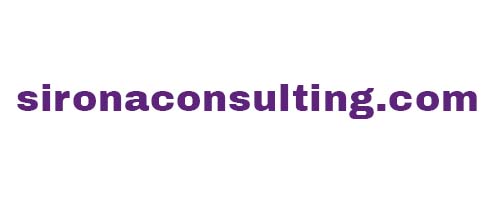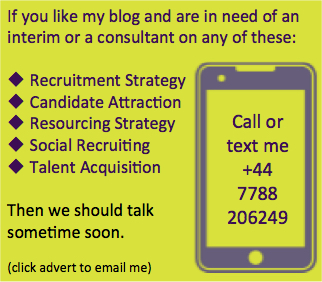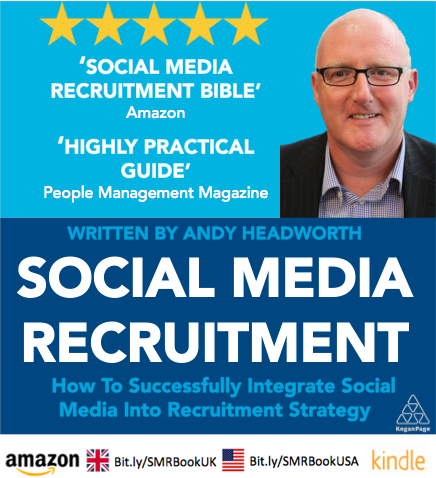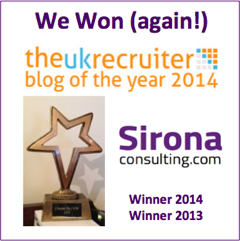Three New Twitter Announcements That Will Greatly Help Recruiters
As social networks mature they start to understand more about how people use them, and they make changes accordingly. For example Facebook moved their Messaging platform to a completely new app - Messenger, and Google+ did the same thing with their platform by creating a standalone app for their messaging platform - Hangouts. While Twitter haven’t gone that far (yet), they have made some superb additions with Vine (short videos) and Periscope (live video streaming within. a Twitter feed), as well as now making some significant changes to their messaging.
This week Twitter have made two announcements (and another recently), that could have a big impact on recruiters who are using Twitter as part of their social recruiting strategy.
1. Twitter will be increasing the Direct Message (DM) character limit from 140 to 10,000.
2. Tweets WITHOUT hashtags or mentions get more clicks.
3. Anyone can now send you a Direct Message (DM) even if you don’t follow them.
In last week’s post, Twitter is no longer optional for recruiters and HR, I went through many reasons why Twitter has become an essential part of a recruiter’s armoury, for recruiting. These three announcements will become crucial for recruiters to understand, as it will have a big impact on Twitter discovery (being found in search), tracking of jobs, success of jobs posted (already limited in my opinion), engaging people who have shared your content and the all important private messages you can now send (DM’s).
So let me explain more about these announcements.
1. Twitter will be increasing the Direct Message (DM) character limit from 140 to 10,000
At some stage in July, Twitter have announced that they are increasing the limit on the private messaging (DM’s) to 10,000 characters (from 140). Currently is becomes cumbersome if you are having a DM conversation with a candidate and having to keep stopping after 140 characters. It is a welcome change, and by the sound of it, it won’t be the last change for DM’s - I expect it soon to add other features to target Facebook Messenger and Hangouts. You can already send video, images, and group DM’s. You did know about the ability to send Group DM’s on Twitter didn’t you? It is a feature I like using.
2. Tweets WITHOUT hashtags or mentions get more clicks
Now this is a HUGE surprise! This is based on a report that Twitter itself released. It found in it’s study that that direct response ads (think job ads within recruitment) with either a hashtag or an @mention performed the worst. It found that if a tweet didn’t include a # or @ mention it will generate 23% more clicks. WOW! Now think of all those job tweets you see crammed full of #hashtags!
The Head of SMB Marketing at Twitter,Anne Mercogliano, suggests that other clickable parts of a tweet are distracting users from what you’re really trying to get them to do.
“If you’re trying to join a conversation, you should absolutely use a hashtag… But for driving for a specific click that you’re looking for off Twitter, the less noise that you put in between [the better].”
So, to be clear, Twitter are not saying avoid hashtags, just make sure you use them in the right context. Use #hashtags for conversation, grouping chats together, conferences and events etc but limit your #hashtags if you are sharing jobs on Twitter, to keep the person reading it focused on your call to action - clicking the link to your job information.
3. Anyone can now send you a Direct Message (DM) even if you don’t follow them
Back to DM’s. A little time ago Twitter made a significant change to their private messages - DM’s. Originally you could only send someone a DM if they followed you on Twitter, but recently they changed that rule to allow anyone to send you a DM. Now before you get worried, it is an optional feature that you have to actually turn on (details how)- it is turned off by default.
You can see what it looks like below from a screen shot of someone I am not following on Twitter. They have switched the ‘Receive direct messages from anyone’ tab in their settings on Twitter. The speech bubble with the cross on it shows me that this person is willing to receive a DM, without me following them (if I was following them the white Follow box would be filled blue).
Obviously for recruitment and HR people this is awesome news. You now have a great way of reaching out to more people on Twitter without having to follow them all. But I would argue that you probably should follow them if they are in your industry anyway!
DM’s are like brilliant candidate contact methods because they arrive on the lock screen of a mobile device and via email into your inbox (if, as most, you have it set up that way). This gives the candidate two options to see your message.
BUT, just because you can DM them like this it doesn’t mean you should every time - especially with the dumb approach many recruiters will now try - blasting jobs and job links at people without any form of communication. Seriously, if you are a recruiter and you spam people with DM’s, let your colleague sitting next to you punch you in the head! It will remind you not to be that stupid next time! Engage people as you would normally engage them, just because it is a DM it shouldn’t make any difference, just because it is a private message. This is a great tool, use it wisely and it will be a very effective candidate communication method.
A little tip: if you use Twitter for recruiting - make sure you turn on your ‘receive DM’s from anyone’ in your settings, as it will help candidates easily reach you.
Thank you Twitter!
These are three very welcome changes in my opinion, and wise recruiters everywhere should be pleased that this great platform if becoming even more useful for candidate sourcing and candidate engagement. I am looking forward to see more changes on Twitter 🙂
If you have enjoyed this post and found it useful then you check out my new book – Social Media Recruitment . It has been described by a reviewer on Amazon, as the Social Media Recruitment Bible. It has already become a N0.1 Best Seller in a short space of time, with many HR and recruiting professionals around the world finding it invaluable. You can buy it here on Amazon UK here and Amazon US here or your own Amazon country site.

-
Bryan & Armstrong










